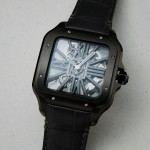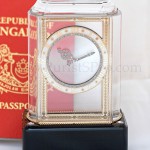Hands-On with the Cartier Santos 100, Now with an In-House Movement
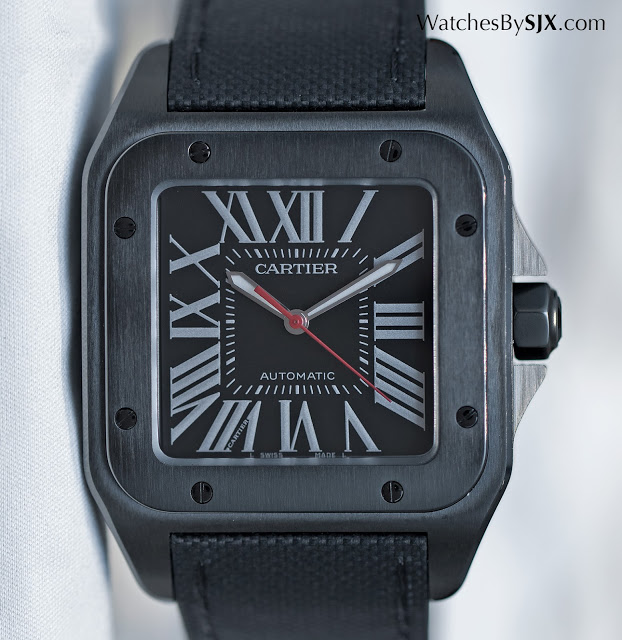
Cartier recently reintroduced the Santos 100 Carbon with minor aesthetic tweaks and more importantly, the in-house 1847 MC movement. Here’s a hands-on look, with original photos and pricing.

One of the most famous square watches ever, the Cartier Santos started life as an early wristwatch conceived for Brazilian aviator Albert Santos-Dumont in 1904. Over the last century the Santos has evolved into myriad forms, including the Santos coated in scratch-resistant amorphous diamond-like carbon (ADLC), now equipped with an in-house movement for the first time. The Santos 100 Carbon was only just unveiled at SIHH 2016, alongside the similarly styled Ballon Bleu Carbon. Cartier first introduced the Santos ADLC in 2009, before discontinuing it three years later, so the Santos 100 Carbon is a throwback of sorts. ADLC is a carbon-based coating that is extremely hard, almost as hard as diamond, and also slightly elastic. The latter property means that even if the steel case is scratched or dented, the coating will tend to adhere rather than flake off.
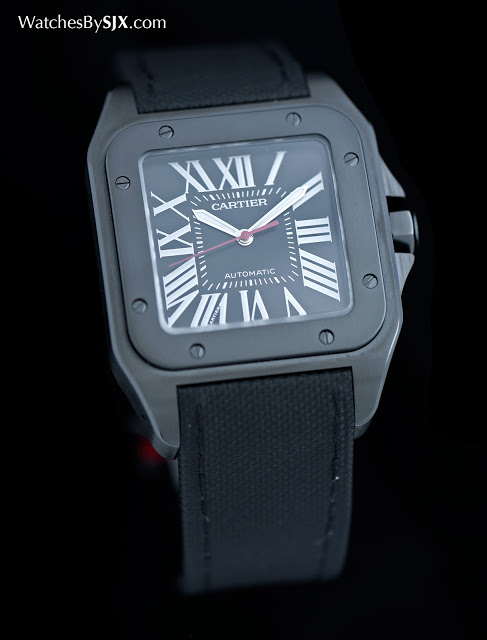
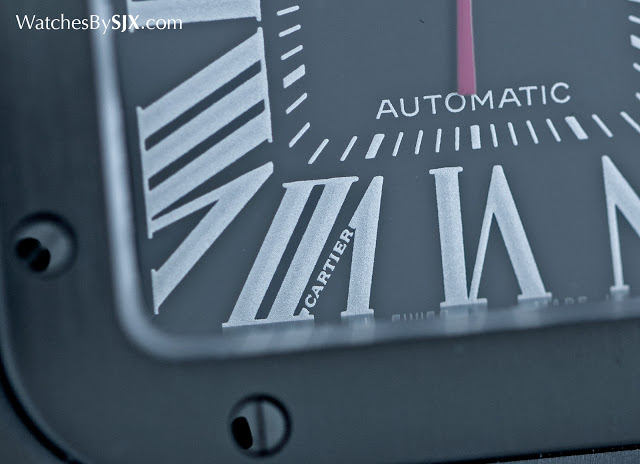 |
| The “secret signature” found on nearly all Cartier watches |
That’s extremely useful for a watch case, especially one as large as the Santos 100, an oversized variant of the original Santos. The dimensions of the Santos 100 Carbon are identical to that of the ordinary stainless steel model, measuring 41.3 mm in diameter and just over 51 mm long. It sits large and chunky on the wrist, though the all-black look of the carbon model reduces the apparent size of the watch.
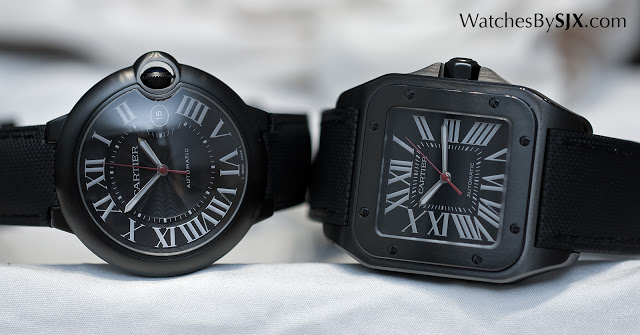 |
| The Santos 100 Carbon (right), alongside the Ballon Bleu Carbon |
Before the case is coated with ADLC, it is finished just like a typical steel case. Consequently the Santos 100 Carbon case has all the details that make the steel equivalent attractive, specifically the polished bevel that runs all along the top edge of the case. This gives the predominantly matte surface a bit of shine, and also highlights the shape of the case.

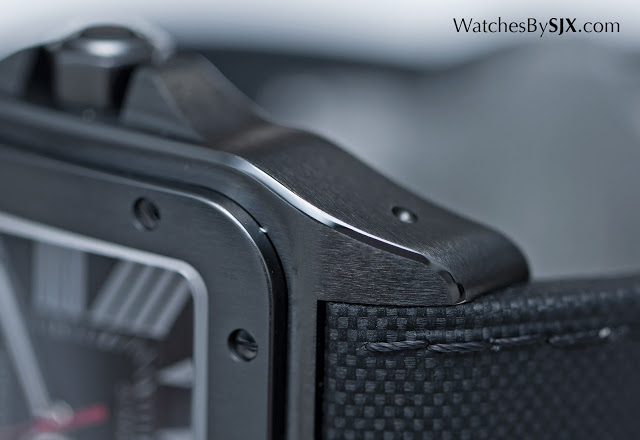
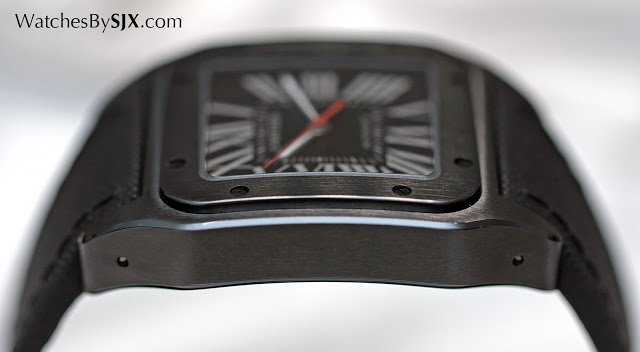
The key aesthetic different between the Santos 100 Carbon and its predecessor are the bezel and seconds hand. Now the bezel is ADLC coated steel, matching the case, while on the first generation it was a contrasting material, either titanium or rose gold. And the seconds hand is now a striking red, a somewhat predictable colour for a sporty-ish watch.
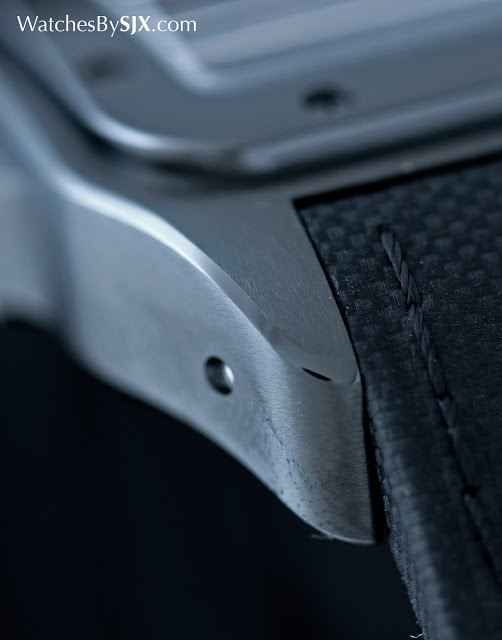
In-house for the first time While the red and black look is not novel, it is appealing. But the Santos 100 Carbon is not just an aesthetic exercise. Instead of the ETA movement found in its predecessor, the new Santos is powered by the 1847 MC.
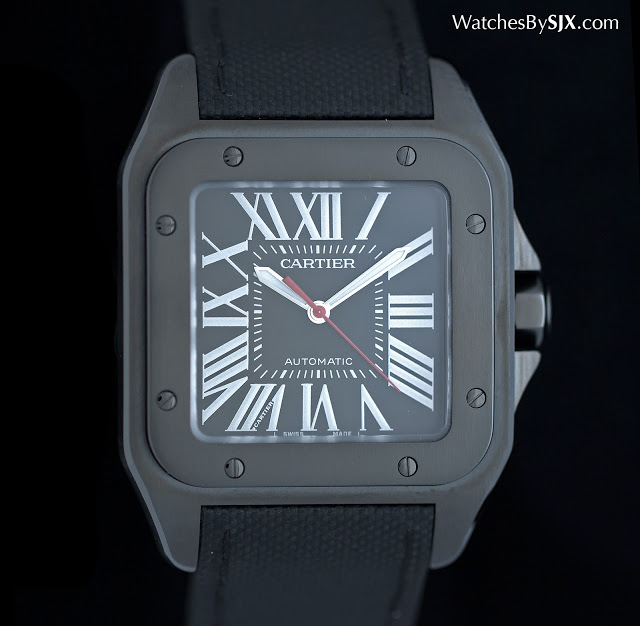
This is Cartier’s workhorse entry-level movement that made its debut two years ago with the Cle de Cartier. Hidden behind an ADLC coated case back, it’s a basic but competent, featuring the efficient but simple “Magic Lever” automatic winding. Pricing and availability The Santos 100 Carbon is €6100, or about US$6700, which is almost the same as the ordinary steel model. It will be available starting June 2016.
Back to top.
